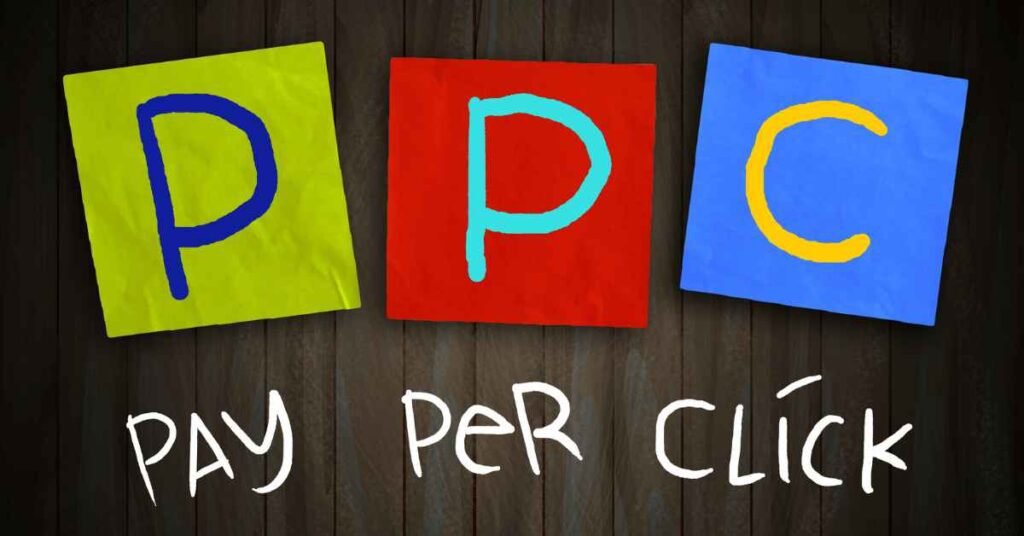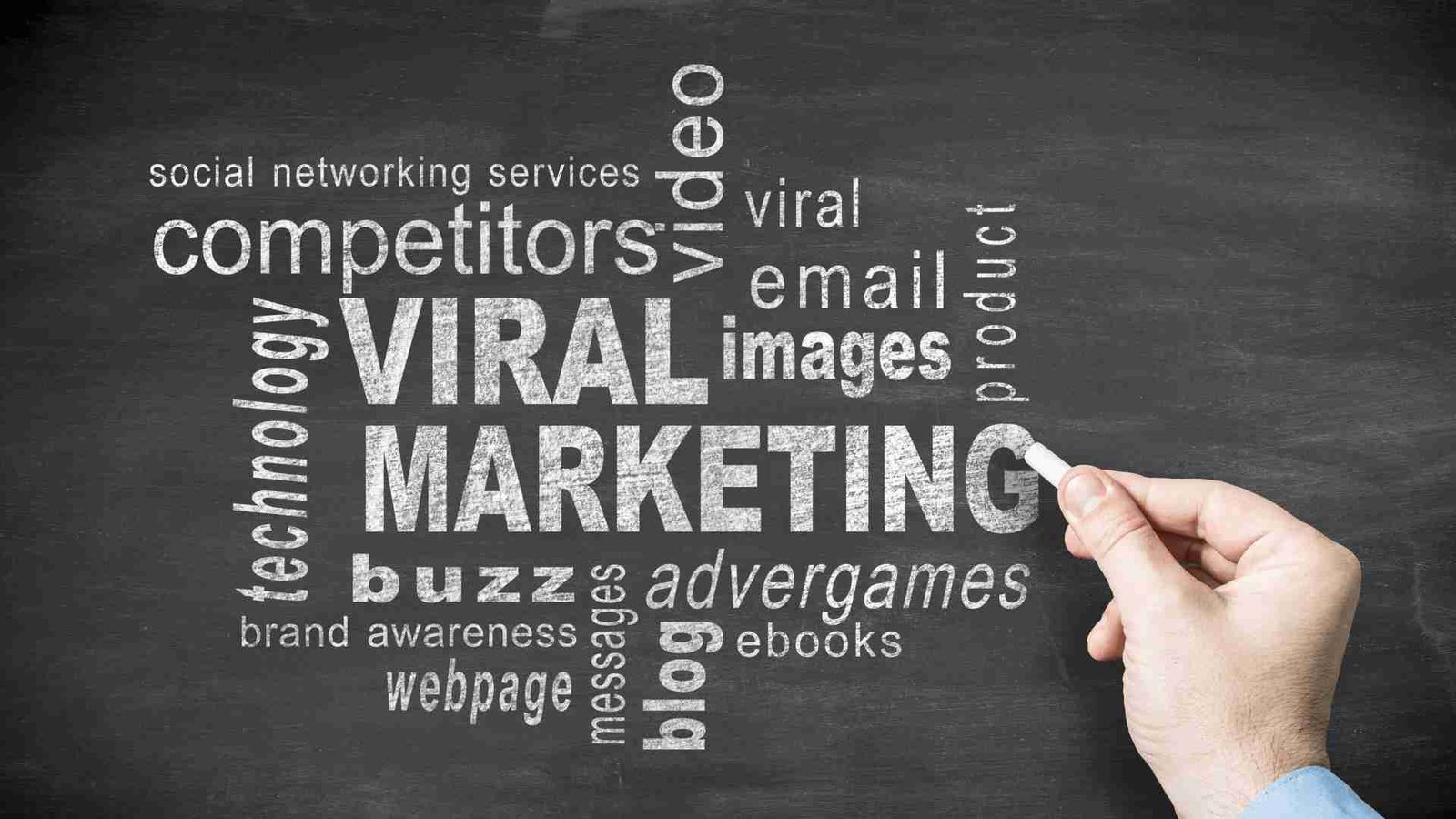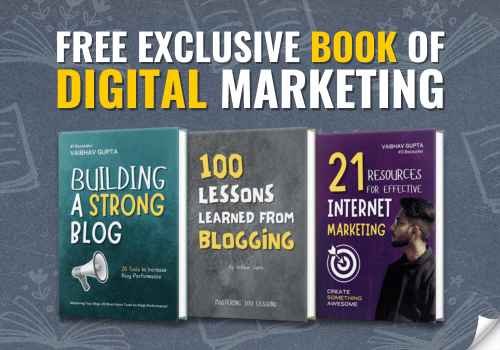
Effective Ways to Maximize ROI with Pay Per Click Advertisement

What is Pay Per Click (PPC) Advertising?
PPC advertising, or Pay-Per-Click advertising, is a digital marketing model where advertisers have to pay a fee each time whenever their ad is clicked. It’s a way of buying visits to your site rather than attempting to earn those visits organically. PPC ads typically appear on search engine results pages (like Google or Bing) or on social media platforms. The key to success in PPC advertising lies in bidding on relevant keywords that align with your target audience’s search queries and creating compelling ad copy that entices users to click. This model offers advertisers a cost-effective way to drive targeted traffic to their websites and achieve specific marketing objectives.
Importance of Maximizing ROI in Pay Per Click Campaigns
- Cost Efficiency: Maximizing ROI ensures that you are getting the most value out of your advertising budget. It helps in optimizing spending by focusing on campaigns and strategies that generate the highest return.
- Profitability: A higher ROI means higher profits. By maximizing ROI, businesses can ensure that their PPC campaigns are not only driving traffic but also converting that traffic into paying customers or leads.
- Competitive Advantage: Businesses that can achieve a higher ROI in their PPC campaigns can outperform competitors who may be spending more but not generating as much revenue. This provides a competitive edge in the market.
- Scalability: When ROI is maximized, businesses can confidently scale up their PPC efforts. They can reinvest profits into expanding campaigns, targeting new keywords, or reaching broader audiences, knowing that the returns will justify the increased investment.
- Resource Optimization: By focusing on maximizing ROI, businesses can allocate their resources more effectively. They can identify underperforming campaigns or keywords and reallocate budgets to more profitable areas, improving overall campaign efficiency.
- Measurable Success: Maximizing ROI provides clear and measurable indicators of campaign success. It allows businesses to track and analyze performance metrics accurately, identify areas for improvement, and make data-driven decisions to optimize future campaigns.
- Sustainability: Sustainable growth in PPC advertising relies on consistently maximizing ROI. By continuously improving campaign performance and efficiency, businesses can sustain long-term success and avoid wasting resources on ineffective strategies.
Understanding PPC Advertising
How Pay Per Click works
PPC, or Pay-Per-Click, works by allowing advertisers to bid on specific keywords relevant to their target audience. When users search for these keywords on search engines or browse websites with relevant content, ads are displayed. Advertisers pay a fee only when their ad is clicked, hence the name “pay-per-click.” The ad placement is determined through a combination of bid amount, ad relevance, and other factors, with the goal of driving targeted traffic to the advertiser’s website and generating conversions.
Also Read: Understanding Google Ads
Different PPC platforms (Google Ads, Bing Ads, Social Media Ads)
1. Google Ads (formerly Google AdWords):
- Largest and most widely used PPC platform, dominating the search engine market.
- Advertisers bid on keywords to display their ads in Google’s search results and on partner websites within the Google Display Network.
- Offers various ad formats, including text ads, display ads, video ads, and shopping ads.
- Provides robust targeting options, including geographic location, device type, demographics, and more.
2. Bing Ads (now Microsoft Advertising):
- PPC platform owned by Microsoft, serving ads on the Bing search engine and its partner networks, including Yahoo and AOL.
- Generally, has lower competition and cost-per-click (CPC) compared to Google Ads, making it an attractive option for advertisers with smaller budgets.
- Offers similar ad formats and targeting options as Google Ads, allowing advertisers to reach a diverse audience across different search engines.
3. Social Media Ads (e.g., Facebook Ads, Instagram Ads, Twitter Ads, LinkedIn Ads):
- Social media platforms offer PPC advertising options to reach users based on their interests, demographics, and behaviours.
- Facebook Ads and Instagram Ads allow advertisers to create highly targeted campaigns using user data such as age, location, interests, and behaviour.
- Twitter Ads enable advertisers to promote tweets, accounts, or trends to targeted audiences based on demographics, interests, or keywords.
- LinkedIn Ads target professionals and businesses based on job title, industry, company size, and more, making it ideal for B2B marketing.
Setting Clear Goals
Importance of defining objectives
Defining objectives is crucial for setting clear goals as it provides a roadmap for success. By clearly outlining what you aim to achieve, you can focus your efforts, resources, and strategies more effectively. Objectives act as guiding principles, helping you stay on track and measure progress along the way. They also facilitate communication and alignment within teams, ensuring everyone is working towards the same desired outcomes. Ultimately, defining objectives enhances accountability and increases the likelihood of achieving your desired results.
SMART Goals (Specific, Measurable, Achievable, Relevant, Time-bound)
- Specific: Goals should be clear, concise, and well-defined. They should answer the questions of who, what, where, when, and why.
- Measurable: Goals should be quantifiable, allowing for tracking and assessment of progress. Establishing concrete criteria helps determine when a goal has been successfully achieved.
- Achievable: Goals should be realistic and attainable, considering available resources, skills, and constraints. While they should stretch your abilities, they should also be within reach.
- Relevant: Goals should align with broader objectives and be pertinent to the overall mission or purpose. They should contribute meaningfully to your desired outcomes and organizational priorities.
- Time-bound: Goals should have a deadline or timeframe for completion. Setting a specific timeframe creates urgency, motivates action, and provides a sense of accountability.
Keyword Research in PPC campaigns
Keyword research is essential in PPC campaigns as it forms the foundation of a successful advertising strategy. By identifying the right keywords, advertisers can target their ads to reach the most relevant audience, maximizing the chances of conversions. Thorough research helps uncover valuable insights into search trends, user behaviour, and competitor strategies, allowing for more informed decision-making. Moreover, selecting the appropriate keywords ensures optimal ad relevance and quality scores, which can lower costs and improve ad performance. Continuously refining and updating keyword lists based on data analysis is essential for staying competitive and maximizing ROI in PPC advertising.
Tools and techniques for Keyword Research
- Google Keyword Planner: A free tool by Google that provides insights into keyword search volumes, competition levels, and bid estimates. It’s particularly useful for finding relevant keywords and estimating their potential performance in Google Ads campaigns.
- SEMrush: A comprehensive SEO and PPC tool that offers keyword research capabilities along with competitor analysis, backlink analysis, and more. SEMrush provides valuable data on keyword volume, competition, trends, and related keywords, helping advertisers identify opportunities and refine their strategies.
- SpyFu: This tool allows users to spy on their competitors’ PPC campaigns, uncovering their top-performing keywords, ad copy, and ad spend. By analysing competitor data, advertisers can gain valuable insights and identify potential keywords to target in their own campaigns.
- io: This tool generates keyword suggestions based on search queries from various sources, including Google, YouTube, Bing, Amazon, and more. It provides insights into long-tail keywords, questions, and related searches, helping advertisers discover untapped opportunities.
- Ahrefs: Primarily known as an SEO tool, Ahrefs also offers powerful keyword research features. It provides data on keyword difficulty, search volume, and click-through rates (CTR), enabling advertisers to identify high-potential keywords with relatively low competition.
- Google Trends: While not a traditional keyword research tool, Google Trends provides valuable insights into keyword popularity and seasonality. It helps advertisers understand trends over time, allowing them to make informed decisions about when and how to target specific keywords in their campaigns.
Creating Compelling Ad Copy
Elements of effective ad copy (headline, description, call-to-action)
- Headline: The headline is the first thing users see and should grab their attention immediately. It should be concise, compelling, and relevant to the user’s query or intent. Including keywords and unique selling propositions (USPs) can help make the headline more impactful.
- Description: The description provides additional information about the product, service, or offer. It should highlight key benefits, features, or promotions in a clear and persuasive manner. Using language that resonates with the target audience and addressing their pain points can increase engagement and click-through rates.
- Call-to-Action (CTA): The CTA prompts users to take a specific action, such as making a purchase, signing up for a newsletter, or contacting the business. It should be clear, actionable, and aligned with the ad’s objective. Using action verbs and creating a sense of urgency can encourage users to act immediately.
Optimizing Landing Pages
Importance of landing page optimization for PPC campaigns
- Higher Conversion Rates: Optimized landing pages are tailored to match the ad’s messaging and offer, providing a seamless user experience. This alignment increases the likelihood of conversions, whether it’s a purchase, form submission, or other desired action.
- Improved Quality Score: Search engines like Google factor in landing page relevance and user experience when determining ad quality scores. A well-optimized landing page can lead to higher quality scores, which in turn can lower ad costs and improve ad placement.
- Better User Experience: Landing pages that are optimized for user experience load quickly, are easy to navigate, and provide valuable information. This enhances user satisfaction and reduces bounce rates, ultimately leading to more engaged visitors and higher conversion rates.
- Enhanced Ad Performance: By continuously testing and refining landing pages, advertisers can identify which elements lead to the best results. This iterative process allows for data-driven optimization and ultimately improves the overall performance of PPC campaigns.
- Maximized ROI: Optimized landing pages ensure that ad spend is directed towards high-converting traffic. By focusing on improving conversion rates and reducing wasted ad spend, advertisers can maximize the return on investment (ROI) from their PPC campaigns.
Bid Management Strategies
Understanding bidding strategies (manual vs. automated bidding)
- Manual Bidding: Involves setting bids manually for each keyword or ad group. This approach provides full control over bid amounts and allows for precise optimization based on performance data and campaign objectives.
- Automated Bidding: Utilizes machine learning algorithms to adjust bids automatically based on predefined goals and parameters. Automated bidding strategies, such as target CPA (cost-per-acquisition) or target ROAS (return on ad spend), aim to maximize performance while minimizing manual effort.
- Pros of Manual Bidding: Offers flexibility to adjust bids based on real-time insights and strategic decisions. It’s ideal for experienced advertisers who prefer hands-on control over bidding.
- Pros of Automated Bidding: Saves time and effort by letting algorithms optimize bids based on performance data and goals. It’s beneficial for advertisers managing large-scale campaigns or those new to PPC, as it streamlines the bidding process and can improve efficiency.
- Choosing the Right Strategy: The optimal bidding strategy depends on factors such as campaign objectives, budget, resources, and level of expertise. Some advertisers may opt for a hybrid approach, combining manual and automated bidding to capitalize on the strengths of each method.
Monitoring and Analysing Campaign Performance
Importance of ongoing monitoring and analysis
- Performance Optimization: Regular monitoring allows marketers to identify trends, patterns, and areas of improvement in real-time. By analyzing key metrics such as click-through rates, conversion rates, and return on investment (ROI), marketers can optimize campaigns for better performance.
- Adaptation to Changes: The digital landscape is dynamic, with frequent algorithm updates, shifts in consumer behavior, and changes in market trends. Continuous monitoring helps marketers stay agile and adapt their strategies accordingly to remain competitive and relevant.
- Budget Allocation: Monitoring campaign performance enables marketers to make data-driven decisions regarding budget allocation. By identifying top-performing channels, keywords, or demographics, marketers can allocate resources more effectively to maximize ROI.
- Identification of Issues: Monitoring allows marketers to quickly identify and address any issues or discrepancies in campaign performance. Whether it’s technical issues with tracking, ad disapprovals, or budget overspending, timely intervention can prevent significant losses and maintain campaign integrity.
- Continuous Improvement: Analysis of campaign data provides valuable insights that inform future strategies and tactics. By learning from past successes and failures, marketers can iteratively improve their campaigns, refine targeting strategies, and optimize ad creatives for better results over time.
Continuous Optimization
Importance of ongoing optimization in PPC campaigns
- Maximizing ROI: Continuous optimization ensures that ad spend is directed towards high-performing keywords, ads, and audiences, maximizing return on investment (ROI).
- Adapting to Market Changes: The digital landscape is dynamic, with shifts in consumer behavior, competition, and market trends. Regular optimization allows advertisers to adapt their strategies accordingly to stay competitive and relevant
- Improving Quality Score: Optimization efforts, such as refining ad copy, landing pages, and targeting parameters, can improve ad relevance and quality scores. Higher quality scores lead to better ad placements and lower costs per click.
- Enhancing User Experience: Optimization focuses on improving the user experience, including factors such as website speed, mobile-friendliness, and ad relevance. A positive user experience not only boosts conversion rates but also contributes to overall campaign success.
- Iterative Learning and Improvement: Through ongoing optimization, advertisers gather valuable insights into what works and what doesn’t. This iterative process of testing, analyzing, and refining leads to continuous improvement and long-term success in PPC advertising.
Strategies for continuous optimization
1. Split Testing (A/B Testing):
- Test different elements of your ads, such as headlines, descriptions, or call-to-action (CTA) buttons, to determine which variations perform best.
- Use split testing to experiment with different landing page designs, layouts, or offers to optimize conversion rates.
- Analyze the results to identify winning variations and incorporate them into your campaigns for ongoing improvement.
2. Ad Scheduling:
- Review campaign performance data to identify peak times or days when your target audience is most active or responsive.
- Adjust ad schedules to allocate more budget and bids during high-converting periods, maximizing the impact of your ads.
- Continuously monitor and refine ad scheduling based on performance metrics to ensure optimal results.
3. Geographic Targeting:
- Utilize geographic targeting to focus your ads on specific regions, cities, or even neighborhoods where your target audience is located.
- Analyze geographic performance data to identify areas with high conversion rates or potential for growth.
- Refine targeting parameters based on performance insights, adjusting bids, ad copy, or offers to better resonate with local audiences.
4. Keyword Expansion and Optimization:
- Regularly review keyword performance data to identify high-performing keywords and opportunities for expansion.
- Experiment with different keyword match types (broad, phrase, exact) to refine targeting and improve relevance.
- Continuously optimize keyword lists by adding new relevant terms, removing irrelevant ones, and adjusting bids based on performance.
5. Ad Extension Utilization:
- Take advantage of ad extensions such as sitelinks, callouts, and structured snippets to enhance ad visibility and provide additional information to users.
- Test different combinations of ad extensions to see which ones drive the most engagement and conversions.
- Monitor performance metrics to identify opportunities for further optimization and refinement of ad extensions.
In conclusion, maximizing ROI with pay-per-click (PPC) advertising requires a strategic approach focused on continuous optimization and adaptation. By leveraging tools and techniques such as keyword research, ad copy optimization, and ongoing monitoring, advertisers can refine their campaigns to target the right audience, at the right time, with the right message. Additionally, implementing strategies like split testing, ad scheduling, geographic targeting, and ad extension utilization enables advertisers to identify opportunities for improvement and capitalize on them for enhanced performance. Ultimately, a data-driven and iterative approach to PPC advertising not only maximizes return on investment but also ensures long-term success in driving relevant traffic, increasing conversions, and achieving business objectives.
Related Articles
Frequently Asked Questions
Focus on relevant keywords, compelling ad copy, and optimized landing pages. Monitor performance and make adjustments for better results.
Utilize remarketing, ad extensions, ad scheduling, audience targeting, and bid optimization to enhance ROI.
Set clear goals, use tracking tools like Google Analytics, and regularly review metrics to calculate and improve ROI.

VAIBHAV GUPTA
DIGITAL MARKETER
I’m Vaibhav Gupta the founder of DCampaign Marketing. I’m having experience for more than 4 year in the field of digital marketing as well blogging.




